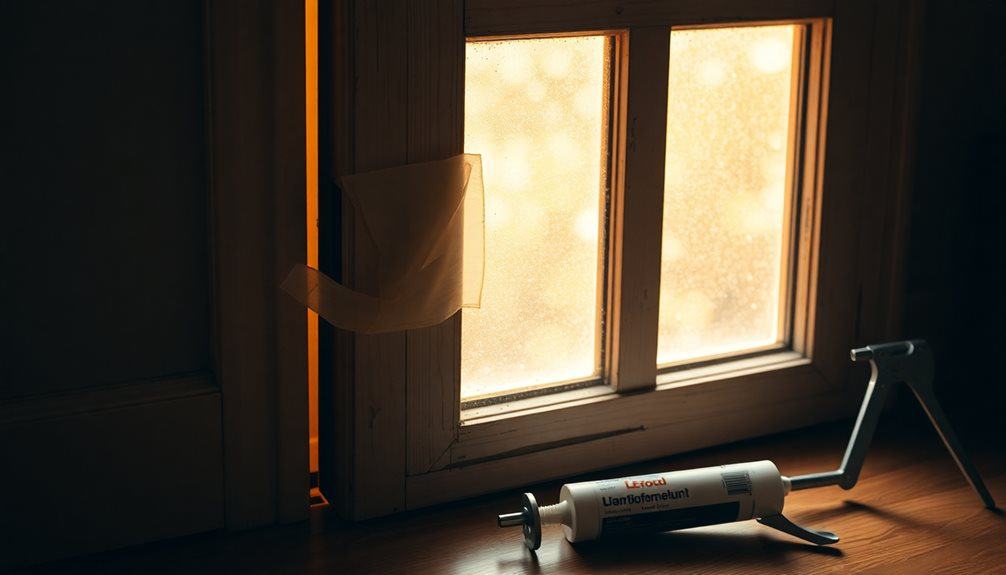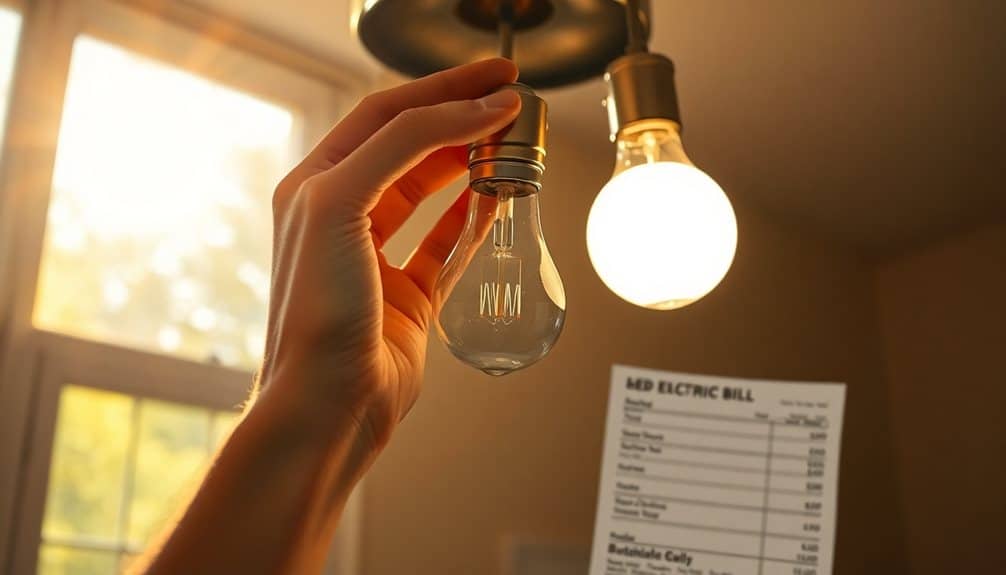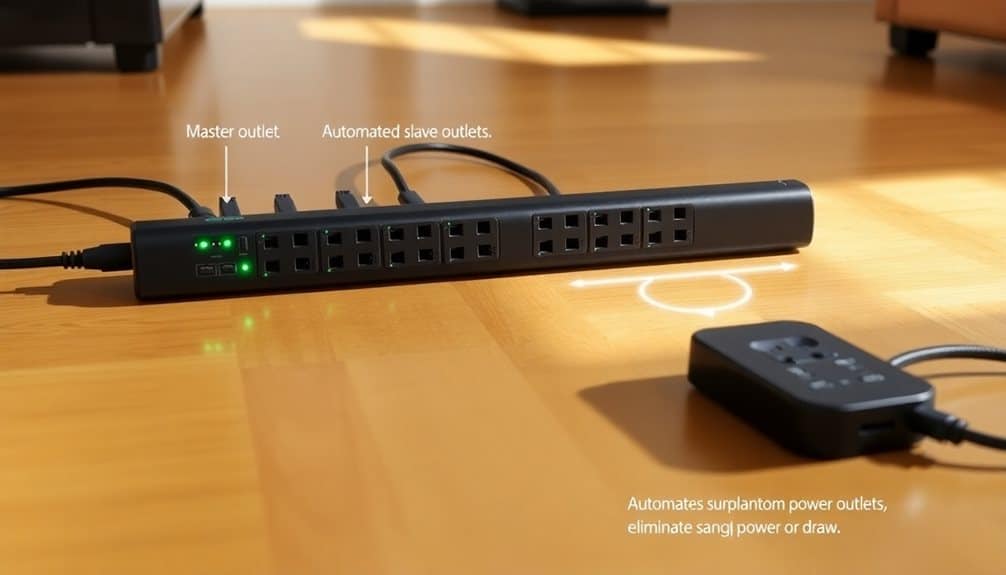This website contains affiliate links. Some products are gifted by the brand to test. As an Amazon Associate, I earn from qualifying purchases. The content on this website was created with the help of AI.
You'll greatly reduce your energy costs with three budget-friendly methods that deliver real savings. Start by sealing air leaks around windows, doors, and outlets using inexpensive weatherstripping and caulk – this alone can cut heating and cooling waste by 30%. Next, replace your most-used light bulbs with LED alternatives, which use 90% less electricity and last up to 25 times longer than traditional bulbs. Finally, combat energy vampires by installing smart power strips to automatically cut power to idle electronics, potentially saving $50-$100 annually. These simple changes are just the beginning of your energy-saving journey.
Key Takeaways
- Install LED bulbs in frequently used areas to reduce electricity consumption by up to 90% and recover costs within a year.
- Use smart power strips to prevent phantom energy drain from electronics, saving up to $100 annually on electricity bills.
- Identify and seal air leaks around windows and doors using weatherstripping and caulk to reduce heating and cooling costs.
- Replace or clean HVAC filters monthly to maintain system efficiency and reduce energy consumption.
- Turn off lights and unplug electronics when not in use to eliminate unnecessary power consumption throughout your home.
Seal Those Sneaky Air Leaks

Around your home, air leaks can waste up to 30% of your heating and cooling energy, silently draining your wallet throughout the year. These sneaky gaps commonly occur around windows, doors, electrical outlets, baseboards, and where utilities enter your house. To identify leaks, hold a lit incense stick near suspected areas on a windy day – if the smoke wavers, you've found a leak.
Start by weatherstripping your doors and windows, ensuring a tight seal when closed. Apply caulk around window frames, door frames, and where different building materials meet. Don't forget to check your electrical outlets – install foam gaskets behind outlet covers on exterior walls. For larger gaps around pipes and vents, use expandable spray foam.
Your attic and basement deserve special attention. Seal gaps around recessed lighting fixtures, plumbing stacks, and chimney flashing. Install door sweeps on exterior doors and foam tape around attic hatches. Remember to check your dryer vent and air conditioning lines where they exit your home. These simple sealing measures can greatly reduce your energy bills and make your home more comfortable year-round.
LED Lighting Switch

Efficiency meets simplicity when you switch to LED bulbs throughout your home. These energy-saving powerhouses use up to 90% less electricity than traditional incandescent bulbs while lasting 15-25 times longer. You'll see immediate savings on your monthly energy bills, often recovering the initial investment within a year.
Start by replacing the most frequently used lights first – kitchen, living room, and outdoor security fixtures typically offer the fastest payback. When shopping, check the lumens rather than watts to match your desired brightness level. A 60-watt equivalent LED only uses about 8-9 watts while providing the same 800 lumens of light output.
Don't forget to look for ENERGY STAR certified LEDs, which meet strict quality and efficiency standards. These bulbs come in various color temperatures, from warm white (2700K) for cozy spaces to daylight (5000K) for task lighting. They're also compatible with most dimmer switches, though you'll need to verify compatibility before installation. Most LEDs now function in enclosed fixtures and outdoors, but always check the packaging for any location restrictions to guarantee peak performance and longevity.
Smart Power Strip Solutions

Several household electronics continue drawing power even when switched off, silently increasing your utility bills. These "energy vampires" include TVs, gaming consoles, computer equipment, and kitchen appliances that maintain standby modes or digital displays. A smart power strip offers an effective solution to combat this phantom energy drain.
You'll find three main types of smart power strips: timer-equipped, occupancy sensing, and current sensing. Timer-equipped strips automatically cut power at preset times, while occupancy sensing strips detect when a room is empty and shut off accordingly. Current sensing strips monitor power usage patterns and cut electricity to peripheral devices when you turn off a primary device, like shutting down speakers and printers when you power off your computer.
To maximize your savings, plug your most-used electronics into a smart power strip and group related devices together. Place your TV and entertainment system on one strip, and your computer setup on another. You can expect to save $50-$100 annually on your electric bill by using smart power strips to eliminate standby power consumption.
Frequently Asked Questions
How Much Can Solar Window Films Reduce Summer Cooling Costs?
You'll typically save 5-15% on your summer cooling costs by installing solar window films. These films can block 70-99% of UV rays and reduce solar heat gain by 40-60% through your windows. While professional installation costs $6-14 per square foot, you can opt for DIY films at $2-4 per square foot. The films pay for themselves within 1-3 cooling seasons through energy savings.
Does Running Appliances at Night Actually Save Money on Electricity Bills?
Running appliances at night can save you money if your utility company offers time-of-use rates or off-peak pricing. You'll typically pay less for electricity between 9 PM and 6 AM when demand is lower. You can cut your bills by 5-25% by shifting energy-intensive tasks like laundry, dishwashing, and charging electric vehicles to these off-peak hours. Check with your provider for specific rate schedules.
What Temperature Should I Set My Water Heater for Maximum Savings?
Like a warm blanket that's just right, your water heater's ideal temperature is 120°F (49°C). You'll save 3-5% on energy costs for every 10°F you lower it from higher settings. Many heaters come preset at 140°F, which is unnecessarily hot and wastes energy. Don't go below 120°F though – that's your safety threshold to prevent harmful bacteria growth while maintaining enough hot water for your needs.
Are Ceiling Fans Rotating in the Correct Direction for Each Season?
You'll know your ceiling fan direction is correct when it spins counterclockwise in summer, pushing air down to create a cooling breeze. In winter, switch it to clockwise rotation, which draws cool air up and redistributes warm air that's collected near the ceiling. Most fans have a small direction switch on the motor housing – just flip it when the seasons change.
How Often Should HVAC Filters Be Replaced to Maintain Energy Efficiency?
Like a car that needs regular oil changes, your HVAC filters require consistent maintenance. You'll want to replace basic fiberglass filters every 30 days for peak performance. If you're using pleated filters, you can stretch it to 60-90 days. For high-end HEPA filters, plan on 6-12 months. Don't wait until they're visibly dirty – a clogged filter forces your system to work harder, wasting energy and money.




